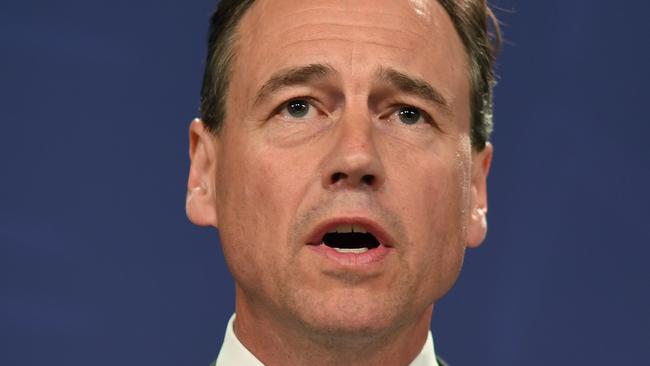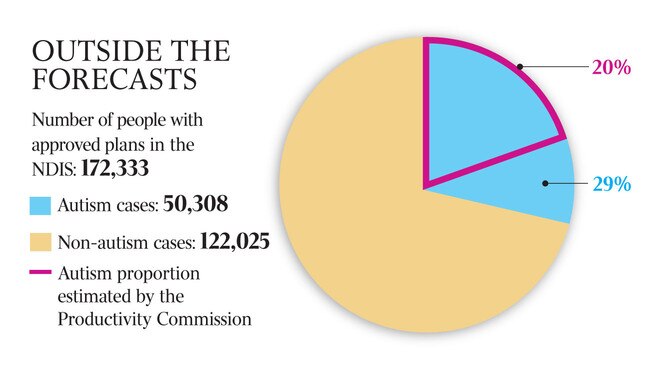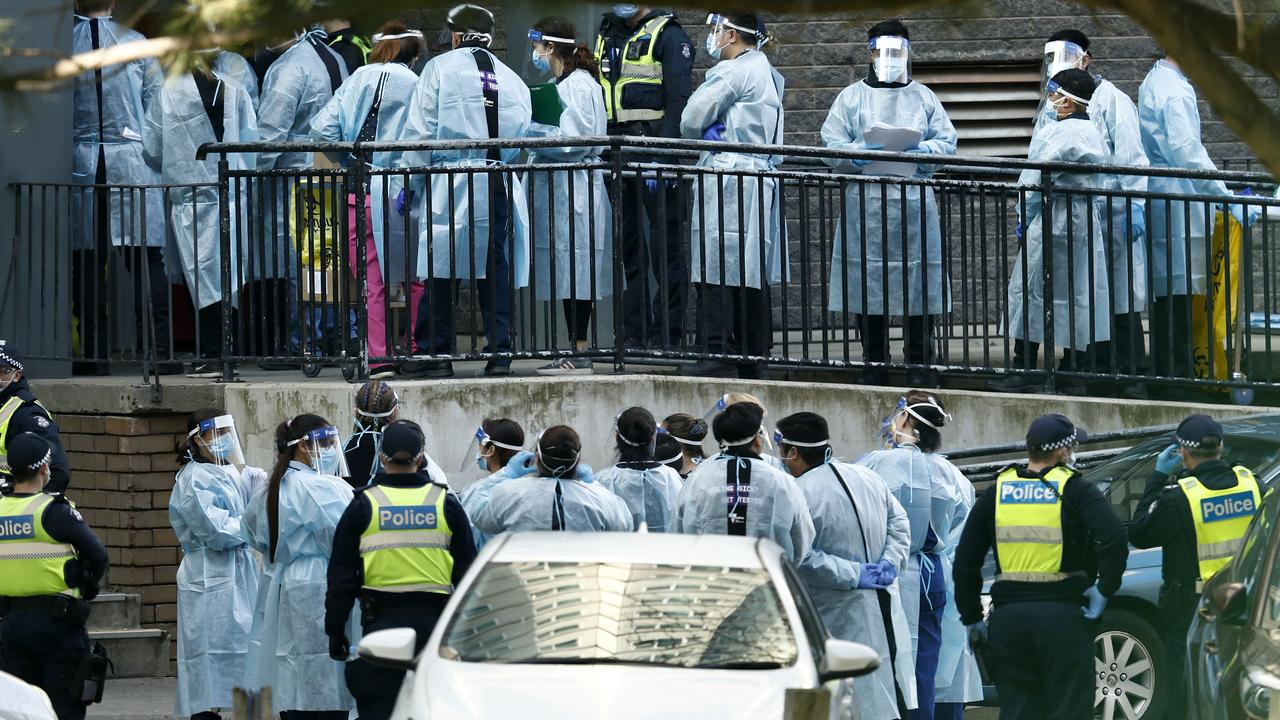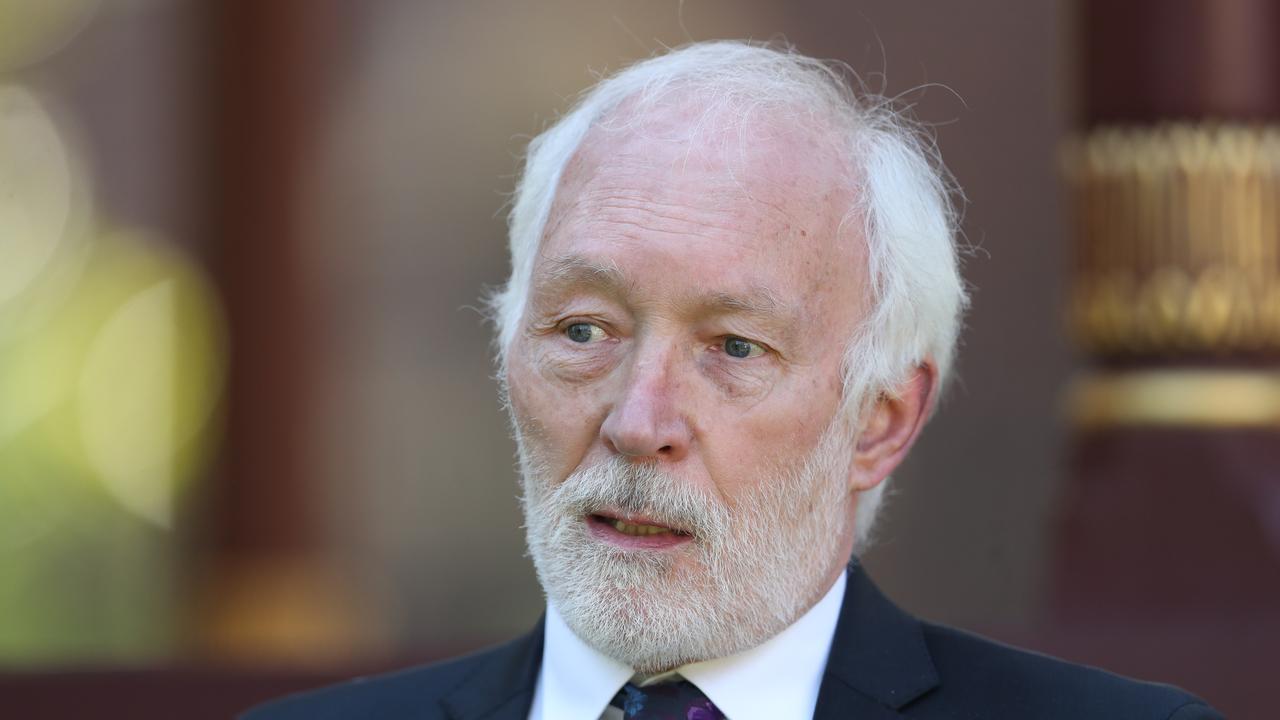Autism overhaul amid NDIS cases blowout
Guidelines for autism cases will be streamlined and doctor-shopping for diagnoses will be eliminated, under new reforms.

Guidelines for autism cases will be streamlined nationwide and doctor-shopping for diagnoses will be eliminated, under a series of reforms aimed at stemming a blowout in the National Disability Insurance Scheme.
The reforms, to be announced by the Morrison government today, have been heralded as a revolution in the way it would smooth out “significant variabilities” in cases confirmed by clinicians.
The approved guideline recommends the prescribed three levels of autism “severity” should never be used to determine eligibility for and provision of services.
COMMENT: A more equitable question of who they are, not what
The new diagnosis guideline — funded by the NDIA but developed at arm’s length — calls for these levels to be ignored because the International Diagnostic and Statistical Manual of Mental Disorders (DSM-V) states they “vary with context and also fluctuate over time”.
The new autism spectrum disorders framework has been approved by the National Health and Medical Research Centre, which includes chief medical officers from every state and territory.
In May, The Australian revealed secret planning within the National Disability Insurance Agency, which is in charge of delivering the $22 billion NDIS, to reduce the growth in the number of people with autism accessing the scheme. While developing the plan, the NDIA accidentally removed some cases from a list that guaranteed automatic entry to the scheme.
There are about 164,000 Australians of all ages with autism, a figure that has spiked by almost 80 per cent in less than a decade.
Social Services Minister Paul Fletcher and Health Minister Greg Hunt will today announce the new “best practice” guidelines to bring “clarity to the way autism is diagnosed”.
They will also reveal an $840,000, one-year research project by the Autism CRC, which is examining new tools that can be used in assessing the ability and functional capacity of people who might have autism.

The chief research officer at the Co-operative Research Centre for Living with Autism, Andrew Whitehouse, told The Australian the reforms were “truly a revolution in the way children and adolescents on the spectrum seek support”.
“Diagnosis is very important for some people because it provides a source of identity but there is a strong view in the clinical community that we have placed too much focus on diagnosis for too long,” Professor Whitehouse said.
“This isn’t about redrawing the diagnostic boundaries — the DSM-V sets out what behaviours and features define autism — but this guideline removes some of the doubt about how to confirm those.
“Because diagnoses are imperfect there is a lot of grey area and determining eligibility for support based on these criteria is a flawed approach. This is not just about the health system, this is about education as well.”
The guideline report says a single clinician is able to diagnose ASD where this can be “reliably made with high confidence by one suitably qualified and experienced clinician” but this must be with the “input” of another specialist from a different field of expertise, such as a psychiatrist.
Under the new reforms, other cases would be referred to a “consensus team”, which can include a medical practitioner with a specialist registration, a psychologist, occupational therapist and speech pathologist. Mr Fletcher said the new guideline was “good news” for families of people undergoing assessment because it removed confusion.
In the South Australian trial of the NDIS, the number of children with autism who received support was double the target set out in the bilateral agreement signed by Julia Gillard and then South Australian premier Jay Weatherill.
Mr Hunt said that because the NHMRC had approved the new guideline, clinicians would know it represented the “best available scientific practice and developed to rigorous standards”.
In the wake of the backlash from the autistic community after the NDIA mistakenly uploaded a new list of conditions for automatic scheme entry, the federal government established the Autism Advisory Group. It also commissioned the Autism CRC to investigating tools that governments could use to assess the “needs and strengths” of an individual with a neurodevelopmental disorder. One of those tools is the pediatric evaluation of disability inventory — a computer adaptive test for autism spectrum disorder which has newly entered use in other countries but has not been trialled in Australia.
Professor Whitehouse said this work was a crucial element of the new diagnosis guideline and could do away with the need for any label.
Mr Fletcher said any person with autism who was eligible for the NDIS would continue to receive the “reasonable and necessary supports” they were assessed as needing.



